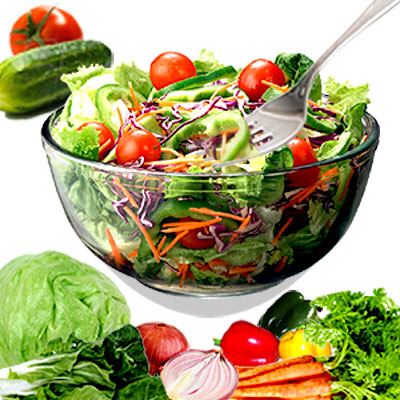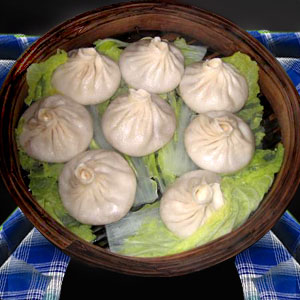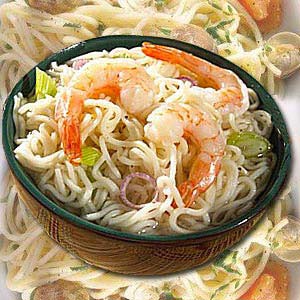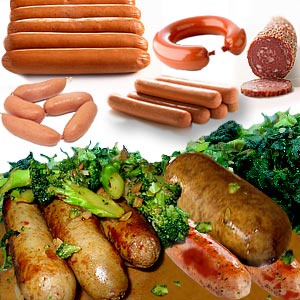Food Addiction

Food addiction is otherwise known as compulsive overeating. It is an obsessive relationship, almost bordering on an addiction to food. Uncontrolled eating or binge eating, a frenzy to overeat is characteristic of food addiction.
Compulsive overeaters do not attempt in purging behavior unlike individuals suffering from bulimia. Food addicts do not fast, use laxative or vomit. Instead compulsive food addicts typically tend to eat even when they are not hungry.
Compulsive food addicts engage in grazing behavior and they tend to pick at food throughout the day. They consume huge calories although the quantity consumed every time is quite small.
If left untreated, food addiction can turn into a serious medical condition including high cholesterol, diabetes, heart ailments, hypertension, sleep apnea and depression. The long-term side effects of this condition include kidney disease, arthritis, bone deterioration and even stroke.
Spotting a food addict
The problem is that one may not even realize that he/she has an addiction for food. One may simply consider that to be really enjoying food or having a sweet tooth.
But if anybody thinks about food all through the day, exhibits a physical craving for certain types of food or spends half the time eating a well balanced diet and the other half binging on less healthy choices, then the odds indicate that he/she is clearly a food addict. Most of the time it is intervention from family and friends that makes the food addict admit to themselves that they have a problem.
Symptoms of food addiction
- Disorders including bulimia, compulsive eating, and anorexia are all characteristic of food addiction. Food addicts gain immense pleasure anticipating, making available and ingesting food.
- Food addicts are obsessed with the amount of food they eat, with body weight and image.
- Secretive eating is a common sign. A food addict isolates herself and gobbles up everything in the fridge.
- Eating bad and wrong foods is another sign. She would consume food that is raw, stale, undercooked, or even half frozen. She could also eat junk food, or sweets or even bread compulsively.
- Food addicts eat to relieve stress and worry.
- They eat until they feel sick.
- A feeling of anxiety while overeating is exhibited. A feeling of guilt when they overeat remains.
- They eat too fast so that they can consume more.
- They eat everything on the plate even when they feel full.
Overcoming food addiction
Self help programs, food addicts' anonymous groups and professional treatment are some of the options to help food addict overcome their problem. Food addicts need medical and psychological help to overcome this disorder. Self help groups help to overcome addictions and maintain the anonymity of their members. It would help to try and meet one or more groups. It is necessary to maintain a dairy of progress made and make sure it is noted on a daily basis.
Before reaching for a food one is addicted to, just think how sick it can make you feel after eating. It should help to find something else to do to keep busy so that the overwhelming need to eat is abated.
- Set clear intentions on the parameters of what will change.
- Next, the environment has to be made ready, removing unnecessary trigger foods and ensuring a satisfying meal and snacks are readily available.
- Even if you feel tired, cranky, low energy, make time for transition and stay without the 'favorites'.
- Meditation, walking and quiet pastimes as alternatives can help to smoothen eating.
- Drink lots of water and flush out the system.
- Additional nourishment such as fruits and natural sugars tend to help.
- Crunching raw vegetables will smoothen some of the anxiety and bodily tension.
Obsession with food can arise out of depression. Try to socialize and gradually come out of depression. Start viewing food scientifically instead of personifying it. This will help focus on the health and fitness aspect of the food and ultimately help in curbing craving for food.
Exercising can help burn the extra calories and it is better to start with simple ones such as walking and jogging. Once the body begins to enjoy exercises, the indulgence for food will gradually vanish.
Food addiction detox
The first step to detox is to recognize what the toxins are. The need to detox is due to the addictive and chemicals that food manufacturers put in food that want her to eat more. Compulsive food addiction is similar to substance addictions, but when it comes to detoxification, there are many choices. Eating a fruit in the morning will have a detoxifying effect.
Perhaps a best choice for detoxification is juice fasting. This supplies abundance of nutrients, including enzymes. Fasting on lemon juice and honey is easier than water fasting. Honey and lemon supply nutrients that assist in detoxification and honey reduces the rate of cleansing to a more comfortable level. Since water fasting demands the most calories, the cleansing is more intense.
A diet with raw nuts, fish and baked chicken is good source of protein, Dairy products, cooked starches or greasy food can halt detoxification for several hours. Eating less is one great way to begin the detoxification process but this requires great discipline. Food needs to be chewed and eaten in smaller amounts.
During exercise the lymphatic system is being flushed and the cells are being flooded with health giving oxygen. Walking, aerobic exercises, sports and stretching and light exercises can assist detoxification.
An enema or colonic irrigation gently flushes out the colon with water and it is an avenue for toxic bile to leave the body. But misuse of enemas can affect the normal bacteria flora of the intensive and cause a dependency on enema for regular elimination.
Daily intake of high quality multi vitamin supplement and antioxidants such as E and Q10 and two tablespoons of mixed essential oils should be of great help.
Detoxing from sugar, fat and salt
Doctors opine that sugar, fat and salt trigger the release of dopamine in the pleasure centers of the brain and the result is rush of satisfaction when associating with sugary, fatty or salty food. Eating the intensely satisfying food at McDonald, rushing for potato chips, doughnut addiction belongs to this category.
Detoxing from beef, dairy and gluten
In the US, the cheeseburger, for instance is the most addicting foods made with beef, dairy and wheat. These three foods contain opioids which occupy the same receptor sites as opium and morphine in the human brain. Biting into a cheeseburger literally induces a state of bliss.
The addicting power of beef, dairy, cheese and egg is intensified by manipulating sugar, fat and salt.
The casein and immune globulins in cow's milk release 'moo' opioids; wheat dough in white bread concentrates on mu-opioid chemicals. The fast food chains offer vegetables that naturally contain mu-opioids and the side dish is served with sugar, salt and fat.
Detoxing from high fructose, corn syrup
Modern processed food is loaded with a sweetener called high fructose corn syrup. This is corn starch and white powder that is used to thicken a pudding or a sauce. This starch is loaded with enormous vats. Fructose sits on shelves for months together without crystallizing and makes the baked goods appear fresh. Fructose creates the hormone called leptin.
High fructose corn syrup encourages the brain to forage, snack and nibble on food products that are made with it. And food manufacturers know the secret that eating food sweetened with high fructose corn syrup can keep a person hungry. This sugar is a major ingredient in whole wheat bread and in ketchup, mustard and hot dogs. Fructose fuels thirst in soft drinks and the addiction to caffeine is fed by this concoction.
Detox from food addiction
- The basic step would be to avoid addictive salt, sugar and fat, especially wheat, beef and dairy.
- The next step would be to control eating patterns; avoid highly processed foods laced with corn syrup, caffeine and other chemicals.
- Simply avoid the cues and stop eating 'more'.
- Cupboards with food stocks should be kept closed.
- The human brain can work through doughnuts and potato chips withdrawal and avoid cues for eating more.
- Children should be taught to consume healthy foods. Give them natural foods instead of industrially processed ones and those made at home, rather than in a factory.
Start in taking smaller, more frequent and balanced meals. Reduce the trigger food consumption and replace the food highs with healthier highs, such as exercising. Keep the body nourished with at least three balanced meals a day.
Top of the Page: Food Addiction
Tags:#food addiction #food addiction treatment #food addiction symptoms #overcoming food addiction #food addiction detox
 Food and Nutrition Facts
Food and Nutrition Facts Chamomile
Parsnip Soup
Dim Sum
Gazpacho Soup
Whole Grain Cereal
Jicama Nutrition
Bok Choy Stir Fry
Chia Seeds Benefits
Teff Nutrition
Kaniwa
Flax Seed
Wheatgrass Benefits
Kelp Benefits
Types of Chili Peppers
Medicinal Benefits of Pomegranate
Arugula Leaves
Maca Root
Pitaya Fruit
Benefits of Celery
Leek
Asparagus Benefits
Oyster Stew
Oyster Mushroom
Lupin Beans
Quinoa
Freekeh
Extra Virgin Olive Oil
Dill Pickle
Sauerkraut
Fat Burning Foods
Nutrition Chart
Food Combining
Calorie Counter
calories ...
Non Alcoholic Beverage
Punch Recipes
Food Label Nutrition
Homemade Sausages
Cooking Steak
Eating on a Budget
Budget Friendly Recipes
Quick Recipes
 Healthy Packed Lunch
Healthy Packed Lunch Overnight Oats Recipes
Eggplant Casserole
Brunch Recipes
Burrito Recipes
Muffin Recipes
Cupcake Frosting
Apple Crisp
Stir Fry Cooking
Seafood Salad Recipe
Cooking Corn on the Cob
Finger Food Recipe
Sandwich Recipe
Bread Stuffing Recipes
Easy Chili Recipes
Picnic Recipes
Edible Mushroom Recipes
Mushroom Soup Recipes
Dip Recipe
Tapas Recipe
Corned Beef Recipe
Canned Salmon Recipe
Tilapia Recipes
Crumb Cake
Flourless Chocolate Cake
Regional Food
 Lasagna Recipe
Lasagna Recipe Peruvian Ceviche
Chinese Food Recipe
Vietnamese Food Recipe
Malaysian Food
Korean Food Recipe
Indian Curry Recipe
Edible Rice Paper
Mexican Food Recipe
Quesadilla
Guacamole Dip
Italian Food Recipe
Spanish Food Recipe
Kosher Food
Falafel Recipe
Tandoori Chicken
Noodles
Canape
Couscous
Meatloaf
Chowder
Gumbo Recipe
Crockpot Recipes
Moroccan Food
Healthy Food
Pre Workout Snack
Matcha Tea
Simple food Swaps to Lose Weight
Foods to Beat Stress
Foods to beat Insomnia
Bone Density Foods
Prebiotic Foods
Kefir Grains
Agave Nectar
Spicy Trail Mix
Pesto Sauce
Homemade Hummus
Crab Cake Sauce
Bamboo Shoots Nutrition
Lemon Grass Plant
Butter Beans Recipes
Loose Green Tea
Seaweed Nutrition
Healthy Food
Low Fat Granola Bar
Steel Cut Oatmeal
Fruit Pizza
Pizza Toppings
Green Smoothie
Healthy Meal Planning
Delicious Mealtime Recipes
Heart Healthy Fats
Healthy Heart Recipe
Healthy Dinner Recipe
Healthy Dessert Recipe
Healthy Fast Food
Healthy Kid Recipe
Probiotic Food
Diabetic Friendly Foods
Fruit Salad Recipe
Bread Pudding
Tofu Recipe
Oat Bran
Broccoli Salad
Avocado Recipe
Iron Rich Food
Brain Foods
Antioxidant Food
Natural Diuretic
Low Fat Cooking Tips
Rice Pilaf Recipe
Low fat Chicken Recipe
Food Tips

Sous Vide Cooking Technique
Natural Sugar Substitute
Stevia Sugar Substitute
Sunflower Seeds Nutrition
Bouquet Garni
Cake Decorating Tips
High Satiety Foods
Thanksgiving Dinner
Safe Food Storage
Frozen Food Storage Tips
Cold Storage Food Tips
Leftover Recipe
Food Pyramid
Dairy Free Food
Microwave Cooking
Food Intolerance
Homemade Ice Cream
Apple Cider Vinegar
Benefits of Honey
Beverage Cooler
Food Poisoning Symptom
Food Allergy Symptom
Food Addiction
Top of the Page: Food Addiction
Popularity Index: 100,975

